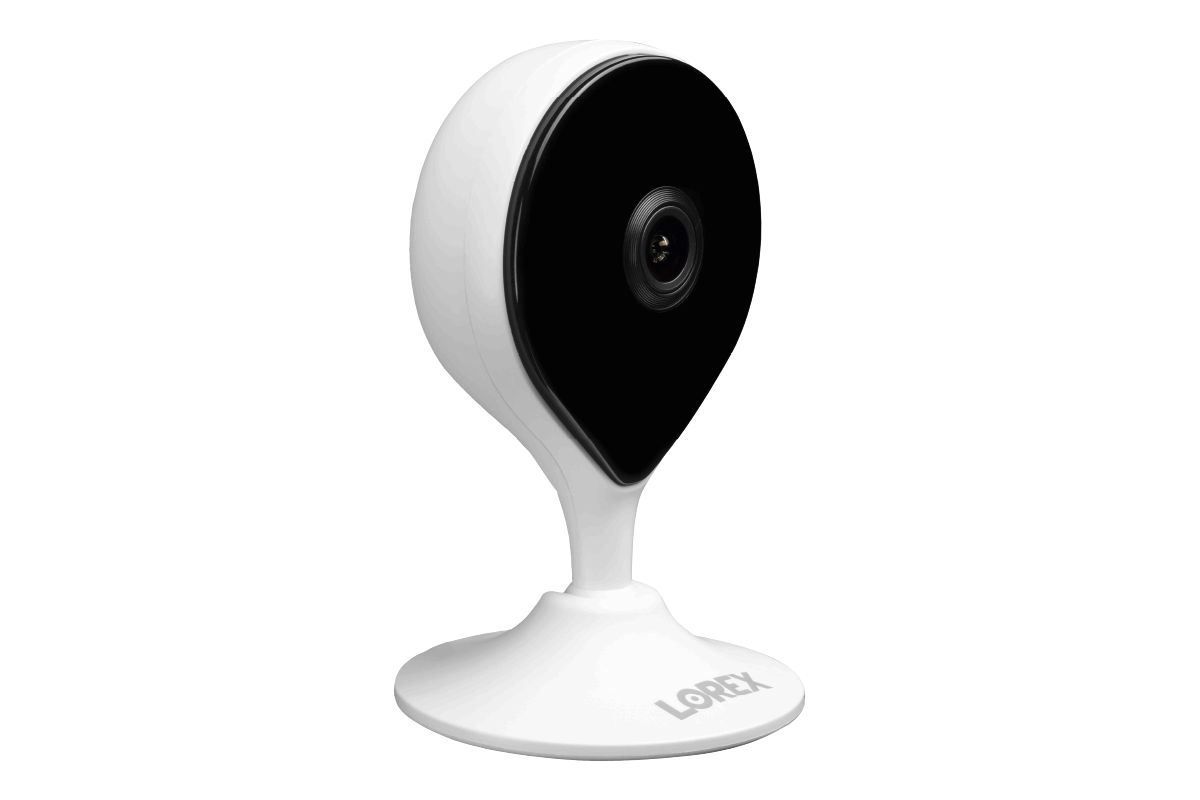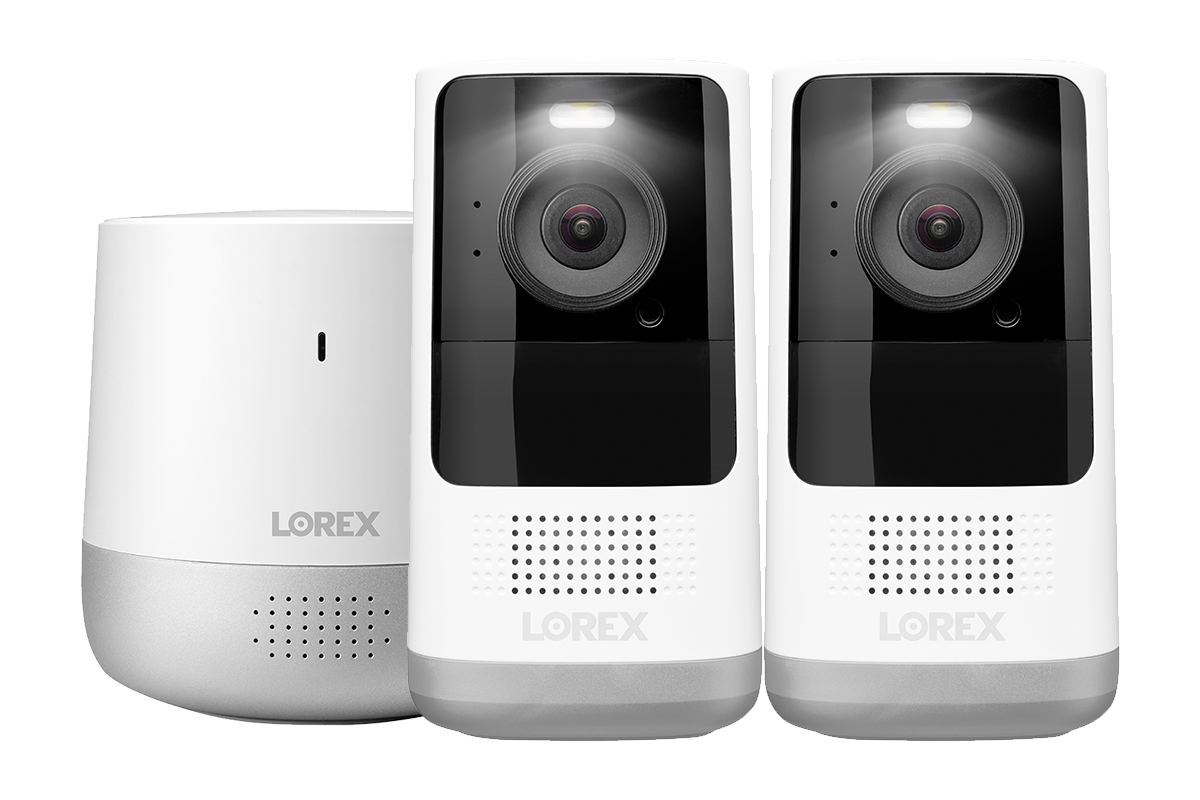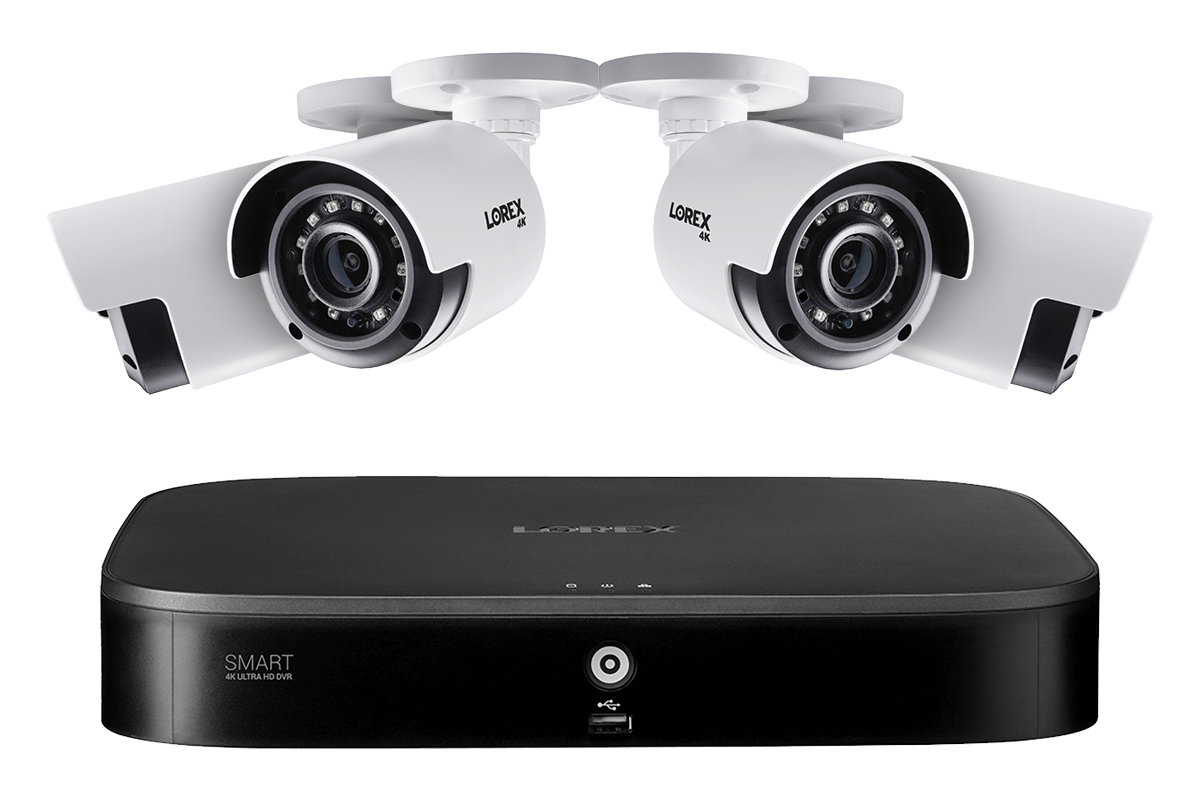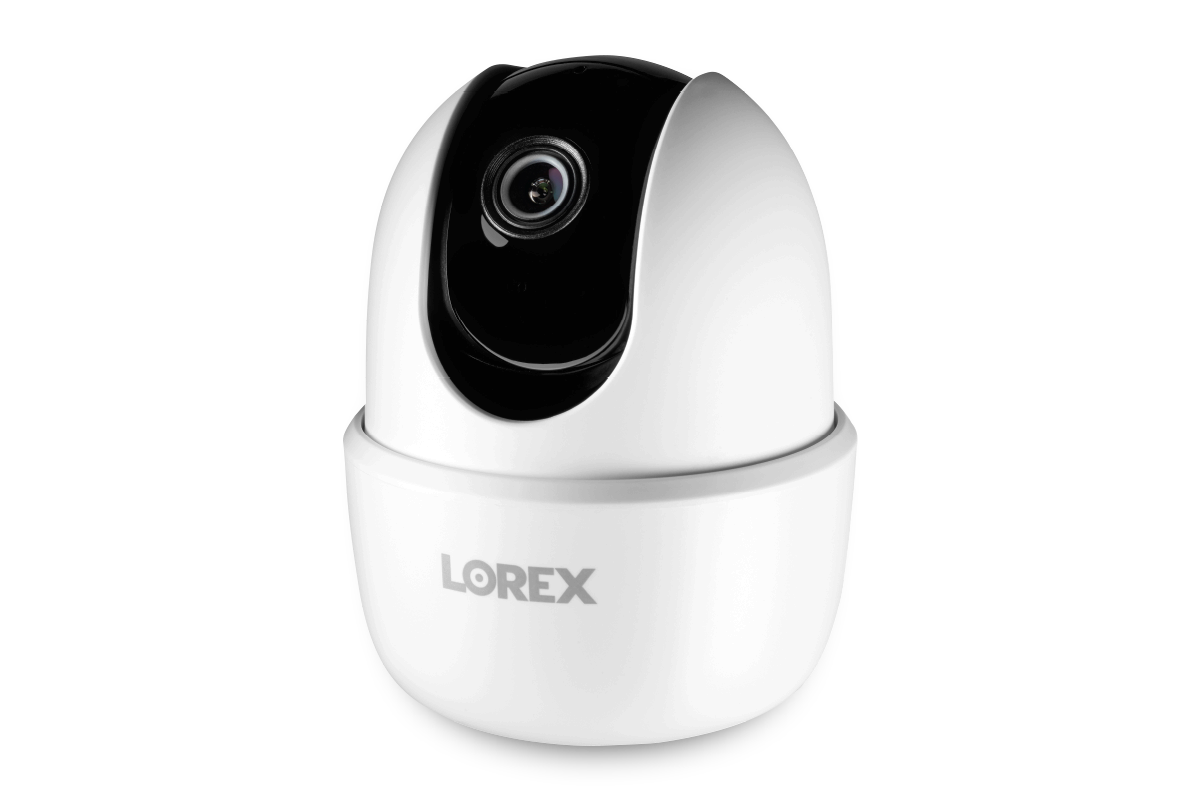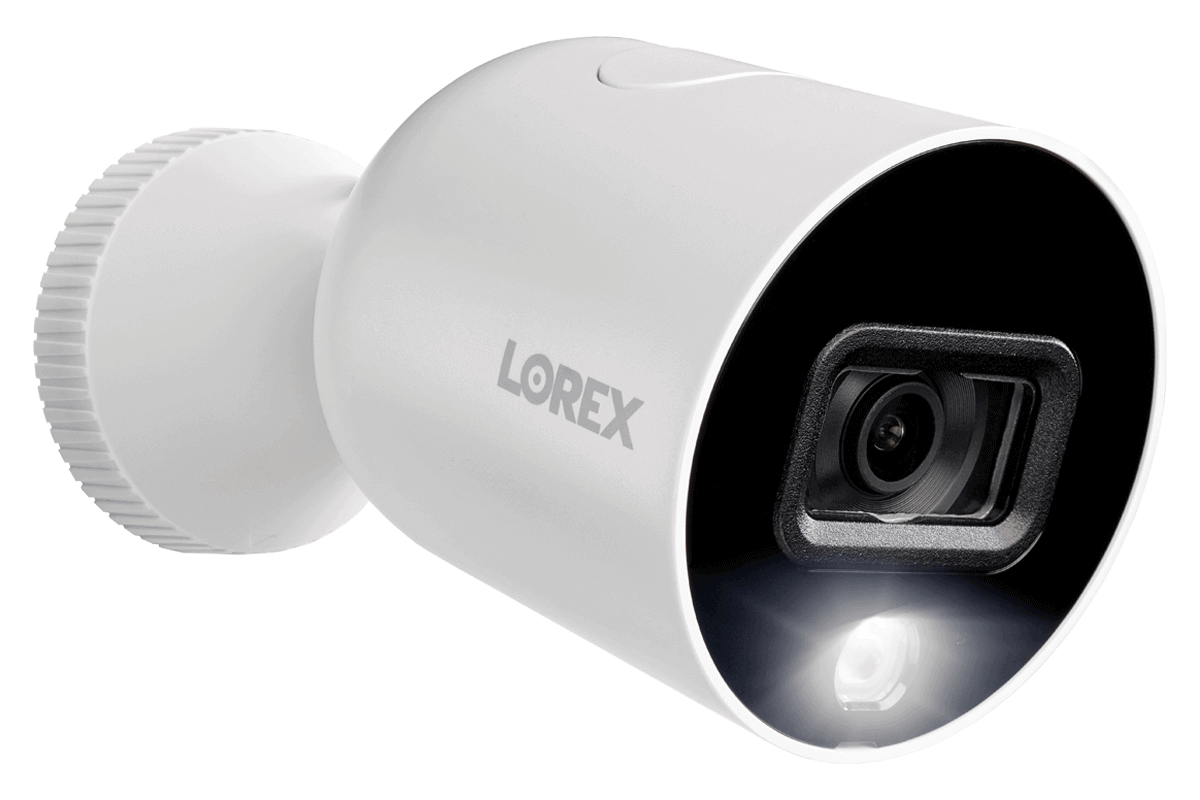Lorex Cameras Review
Lorex is a powerhouse for storing security footage locally without a cloud subscription. Its Wi-Fi cameras support a larger microSD card than any competitor—and its multi-camera systems have DVRs that jump into the terabyte range. We also like the brand's wide selection of 1080p, 2K, and 4K security cameras.
Our favorite Lorex camera is the Lorex Home Center, a thoughtful smart display with two outdoor security cameras. It doesn't require Wi-Fi or the internet, but you can use it with the Lorex Home app if you want.
While Lorex cameras perform well compared to brands like Arlo and Ring, they're more expensive, and some models require stringing long wires around the house. Find out how Lorex models measure up in our comparison.
Lorex camera pros and cons
Lorex cameras in this review
- : Best overall
- : Best doorbell
- : Best value
- : Best wire-free camera
- : Best multi-camera system
What to expect with Lorex security cameras
Lorex is one of the oldest security camera brands around (founded in 1991), so its cameras are fairly stable and reliable. This also means its cameras are a bridge between newer app-centric Wi-Fi security cameras and older wired multi-camera DVR/NVR systems. On average, you can expect to pay more for Lorex cameras than for Reolink, Ring, and Wyze, but about as much as you would for Arlo and Nest.
Here are some core similarities and differences between various Lorex security camera models to help you choose yours.
Similarities
Local storage: Lorex is noteworthy for not offering cloud video storage subscriptions and including storage media (microSD cards or hard drives) with every camera it sells. The lack of cloud storage means your video footage never traverses the internet without you choosing to view videos in the Lorex app. This adds a nice layer of privacy that cloud-centric brands like Nest and Ring can't match.
Large storage capacity: Lorex isn't unique for relying on local storage, but it stands out for allowing massive 256 GB microSD cards in its Wi-Fi camera models. For comparison, brands like Eufy and Reolink top out at 128 GB while Wyze and YI max out at 32 GB of microSD storage. To further build upon Lorex's storage dominance, most of its multi-camera DVRs include at least 1 TB of storage, with many models offering up to 8 TB.
Night vision: Most Lorex cameras come with powerful night vision. While the range depends on the model, we didn't find anything lower than 33 feet while wired multi-camera models regularly exceed 100 feet of night vision range. It's certainly better than the 33-foot maximum on some cheap security cameras like YI and Wyze, which is good for indoor recording and smaller yards, but not for large properties.
Mobile app: Most Lorex cameras use a Wi-Fi network or Ethernet cable to connect to the internet, where you can control them with various Lorex apps. The apps aren't too different from the competition like Reolink, YI, and Night Owl, but we found the Lorex Home app easy to use in our testing. The app also allows you to link your Lorex cameras to smart home platforms like Google Assistant† and Amazon Alexa. (It's not compatible with Apple HomeKit.)
Smart motion detection: All of the Lorex cameras in our review support person detection so they can send notifications when spotting a person. Some outdoor models, like the Lorex Smart Indoor/Outdoor, also support vehicle detection. Plus, the cameras support adjustable motion zones and motion sensitivity to help reduce push notification clutter on your phone.
Differences
Resolution: Lorex cameras have four resolution options: 1080p, 1440p (2K with a 16:9 aspect ratio), 1920p (2K with a 4:3 aspect ratio), and 2160p (4K). As the resolution and amount of detail in videos increases, the price does as well. You'll really feel the price hike with 4K multi-camera setups like the Lorex Fusion 4K NVR System.
Field of view: Most Lorex cameras have a field of view around 120º on average—a little narrower than competitors like Wyze and Arlo (but about the same as Reolink). But Lorex's video doorbells catch more action thanks to views of 160º or more. Lorex has a good field of view since none of the cameras come in lower than 100º—placing them in a corner allows you to see everything in a room.
Number of cameras: While some Lorex cameras come in a standalone package with a single camera, it's more common to see packs of two or more. If you opt for a wired system, you can expect at least four cameras to come with your Lorex DVR.
Home Center compatibility: The Lorex Home Center touchscreen display is a nifty smart display that ditches the traditional DVR and computer monitor combo. It's much more compact and easier to use. But it doesn't work with some of Lorex's Wi-Fi cameras (like the Lorex 2K Video Doorbell and Lorex Home Hub) and systems that already use a DVR. It has a lot of promise as Lorex adds more compatible models, but we'll have to wait and see.
Power source: Most Lorex cameras on our list require a wired power source like a USB cable, Ethernet cable, analog video cable, doorbell wiring, or hardwiring into your home's electrical grid. While some of these methods have easy setup, cables will likely stretch all over your home. Lorex does offer battery-powered models with the Lorex Home Hub and the Lorex Wire-Free Security Systems. Still, its battery-powered selection is a far cry from wire-free competitors like Arlo, Ring, and Reolink.
The Lorex Home Center combines a smart display, Bluetooth speaker, home security system, and a DVR in one. By linking the Home Center to compatible cameras and sensors, you get a handy way to secure your home without monthly fees or even a smartphone. You can even restrict access through face unlock or a PIN code.
With smart displays like Echo Show and Nest Hub, you usually lack control over the cameras. But Lorex Home Center provides full control over any compatible Lorex cameras you link with the system. You can adjust settings, use two-way audio, and view recordings like in the Lorex Home app.
Home Center comes with two Lorex Smart Indoor/Outdoor cameras that you can connect to the system sans internet connection—perfect for your wilderness cabin without reliable internet. These cameras produce clean 1080p video and have a strong night vision range up to 51 feet.
You can also link the Home Center to Lorex's add-on window/door and motion sensors to create a self-monitored Lorex security system. We love it when you can supercharge a security camera system beyond the cameras themselves.
The Lorex Home Center supports up to eight cameras with 1080p resolution or four cameras at 2K (though no 2K cameras are compatible currently). And you won’t run out of storage anytime soon. We like that it comes with a generous 64 GB microSD card, but you can also expand the system up to 256 GB on a micro SD card or add an M.2 2280 SATA solid-state drive up to 1 TB using an expansion port in the back.
As nice as the Home Center is, it isn't compatible with all Lorex security cameras, just the Lorex Smart Indoor camera, Lorex Smart Indoor Pan-Tilt camera, Lorex Floodlight Camera, and Lorex 1080p Video Doorbell. Unlike the Lorex Smart Indoor/Outdoor camera, these cameras require the Lorex Home app to work with the Home Center.
It’s also not compatible with 2.4 GHz Wi-Fi networks, which isn't great for folks with older routers. Fortunately, 5 GHz Wi-Fi is common enough that it's not a huge problem for most people.
Overall, Lorex Home Center is a great option for folks looking to monitor cameras without internet or a mobile device. This camera-focused smart display is easy to use, and setup took us less than 15 minutes. While it's not compatible with every Lorex camera, it covers most types of cameras to help you build a top-notch home surveillance system.
Just like other smart displays, you can control your Lorex Home Center with voice commands. There are a surprising number of commands you can use, like viewing a specific camera, changing playback speed, and checking the weather.
The Lorex 2K Wi-Fi Video Doorbell is a great option for your front door. It has the best local storage capacity of any smart doorbell—especially when most brands don't offer local storage at all. We like the 2K video resolution's crisp appearance that helps you spot visitors and package thieves alike.
Even though we sound like a broken record at this point, the option to add a 256 GB microSD card is worth repeating. We can't emphasize enough that this is Lorex's biggest strength compared to its rivals. We also like that the doorbell has an LED light on the bottom that works as a tiny porch light and helps deter trespassers when detecting motion.
The Lorex doorbell also hosts a five-second pre-recording function that saves some footage from before a motion event so you can see everything that happens, not just the back of a retreating visitor. The Ring Video Doorbell 3 Plus has a similar feature, but you need to pay for cloud storage to unlock it.
Because this is a wired video doorbell, you can expect a longer installation than a normal Wi-Fi camera that simply plugs into an outlet, and you can't adjust the camera's view much beyond using some wedge brackets that come in the box. It's also not currently compatible with the Lorex Home Center, though Lorex says that's coming eventually.
Overall, the Lorex 2K Video Doorbell is a solid alternative to Arlo and Ring's 1080p models. Although it's not compatible with Home Center, we're glad to see Lorex plans to add that functionality later on. If you want a 2K doorbell alternative with optional cloud storage, check out the Eufy Video Doorbell 2K.
The Lorex 1080p Video Doorbell costs around $50 less than the 2K version but functions similarly. Unlike the 2K model, this doorbell camera works with the Lorex Home Center display, which increases its storage capacity and gives you a convenient way to use the unit without the Lorex app.
The Lorex 1080p Full HD Smart Indoor Wi-Fi Camera is the most affordable option you have with Lorex. , it's not as cheap as Wyze Cam v3, but its compatibility with Lorex Home Center makes it an excellent way to expand that system to cover various rooms around the house.
Unlike other cheap security cameras, it comes with a 16 GB microSD card, which is one less thing to buy if you want local storage. Better yet, it's compatible with cards up to 256 GB, which blows away rivals like Eufy and Reolink that don't support anything higher than 128 GB. A 256 GB microSD card will set you back almost as much as this camera's worth, but the extra storage is great for folks wanting continuous recording, like an in-home small business.
We also like that it works with Amazon Alexa and Google Assistant smart displays. This means you can view live video footage with a quick voice command, though you won't get the interactive controls of the Lorex Home app or the Lorex Home Center. The 1080p resolution isn't the best Lorex offers but is more than enough to help you spot crucial details for a police report after a break-in or to save a heartwarming video clip for your family.
Overall, we like the Lorex Smart Indoor camera for its affordability, huge storage capacity, and compatibility with the Home Center smart display. It's not as affordable as some other budget security cameras, but the included storage can cut costs and trouble picking out a microSD card. If you want a cheaper camera, we recommend checking out the Wyze Cam v3.
The Lorex Home Hub offers battery-powered cameras that give you more installation flexibility than wired Lorex cameras, especially since the wireless cameras work indoors and outdoors. While costing about the same as the Lorex Home Center, the bundle includes three cameras and has a higher, 2K video resolution.
The wire-free cameras that work with the Home Hub have a wide 140º field of view, which means they can see more of an area than other Lorex cameras (except the doorbells). A wide field of view is best for outdoor cameras that don't have to deal with walls inside a home.
Lorex lists the battery life for these cameras at 3 to 6 months—shorter than cameras like the Arlo Essential XL—though you can buy an adapter for continuous power. Like other Lorex camera systems, the Home Hub comes with local storage (a 32 GB microSD card) and works with the Lorex Home mobile app.
The biggest drawback of the Lorex Home Hub is that it's not compatible with Lorex Home Center or any other Lorex cameras. If you want additional cameras, you can buy Lorex Home Hub bundles with as many as six cameras—the Home Hub doesn't support more than that. We don't recommend buying add-on wire-free cameras outside of a bundle package since they cost around $180 each—but cost as little as $116 in the six-camera bundle.
Overall, the Lorex Home Hub is a great option for battery-powered security cameras that aren't overly expensive. But if you want a single device for a smaller home, the Reolink Argus 3 Pro is a better option overall (and our favorite wireless camera).
The Lorex 4K Analog System uses wired video cables, in contrast to other Lorex cameras in our review. (Though it's certainly representative of the majority of Lorex cameras that we didn't include on our list.) Its DVR comes with a gargantuan 2 TB hard drive—you need all the space you can get with 4K video.
This 4K multi-camera system produces the best video quality of any camera in our top five but for a reasonable cost of around $400. When you consider that it comes with four cameras, the per-camera cost drops below $100. (It supports up to eight cameras.) Compared to 1080p, 4K video has four times as many pixels, resulting in impressive detail that works well with digital zoom. The cameras also have a 120-foot infrared night vision range, perfect for illuminating large backyards in complete darkness.
Unlike the other cameras on our list, this camera uses long video cables (bundled with a separate power cable) to transmit footage to the DVR. This means no video goes over your Wi-Fi network, saving precious bandwidth for other devices. But it also adds a ton of time to installation since you need to string the cables around the house—just getting wires to look neat and blend in with your decor is a pain. If you want to put the cameras outdoors, you'll need to figure out how to get the wires there.
Overall, this Lorex 4K camera system is a solid choice with excellent 4K video quality for a relatively affordable price. But the extra installation time doesn’t make it the easiest camera solution. You might consider a system with an easier installation like Lorex Home Hub before committing to this wired behemoth.
- Lorex Fusion 4K NVR System: This system is much more expensive than the analog version, but the IP cameras don't need separate video and power cables. The NVR is also compatible with some Lorex Wi-Fi cameras, but it's tough to beat the affordability of the analog Lorex system.
- Lorex Smart Indoor Pan-Tilt: The difference between this and the Lorex Smart Indoor is that you can remotely adjust the view of this IP camera with your Lorex Home Center. This is great for checking on different parts of a large room that the camera couldn't otherwise see. But the fixed view of the cheaper indoor camera captures more than enough action with the right placement.
- Lorex Floodlight Camera: The bright floodlights on this camera are great for lighting up the night outside your home and capturing full-color video—it's even compatible with the Lorex Home Center. Installing this floodlight requires electrical work that's not too difficult but not as easy as plugging in a wired outdoor camera or charging the battery on a wire-free unit.
- Lorex Wire-Free Security System: This 1080p system uses battery-powered cameras compatible with a solar panel to help with recharging. But it uses a different Lorex app (Lorex Cirrus app) than the other cameras in this review, making it harder to use different models in a single app.
- Lorex Smart Indoor/Outdoor: This camera is the same one that comes with the Lorex Home Center, and it's perfectly acceptable to use by itself. But it's a better value to buy it in a bundle with the Home Center, which offers better functionality thanks to the touchscreen smart display.
Final word
Lorex benefits from a wealth of experience compared to newer rivals, resulting in some of the best multi-camera options on the market. We like its strong emphasis on protecting your privacy through local video storage, especially since the massive storage capacity of its cameras more than equals cloud plans from other brands. Some Lorex cameras involve snaking a few more wires around the house than we'd like, but Lorex's Wi-Fi cameras provide a good alternative.
Lorex Home Center: a smart display with in-depth security camera controls and space for up to 1 TB of storage that comes with two excellent 1080p outdoor cameras
Lorex Smart Indoor: an affordable camera that's compatible with larger microSD cards than similarly priced competitors
Lorex Home Hub: battery-powered cameras with 2K video resolution that save money when bundling multiple cameras
Lorex 2K Video Doorbell: support for massive microSD cards makes for an excellent cloud-free video doorbell
Lorex 4K Analog HD System: four cameras with unbeatable 4K video resolution, provided you're willing to string a few wires around the house
How we reviewed Lorex security cameras
Lorex is a prolific security camera company with over 100 camera packages to choose from. (That's a lot of camera options.) To keep things simple (for you and us both), we focused mainly on Wi-Fi cameras and included a couple of the brand's more affordable wired multi-camera systems.
We also tested the Lorex Home Center and the two Lorex Smart Indoor/Outdoor cameras that come with it. These hands-on tests helped us refamiliarize ourselves with Lorex's camera offerings—allowing us to gauge how well the mobile app works and whether it's easy to install the cameras.
To put a bow on our hands-on testing, we compared our experiences with Lorex products to the competition wherever possible to show you where this brand shines and where others are a better option. Learn more about how we review products in our full methodology.
How do wireless security cameras work?
Subscribe to our Youtube channel for more videos like this one! Learn how to protect your home, your loved ones, yourself, and your belongings.
FAQ
No, Lorex doesn't charge monthly fees—it doesn't even offer an optional cloud storage subscription. Instead, it stores your videos locally on a microSD card or hard drive. All Lorex cameras come with some local storage included, but you can also upgrade to get more space.
Lorex is a reliable security camera brand with around 30 years of experience, which is impressive considering its younger competitors mostly started up in the last 10 years. Many of Lorex's products are more traditional, with a DVR or NVR that manages every camera. Still, the company also sells modern Wi-Fi cameras similar to what you find from Arlo, Reolink, and Nest.
Swann is one of Lorex's original competitors and offers many of the same types of cameras and surveillance systems. While we think Swann is a good choice if you want a better selection of affordable Wi-Fi cameras and cloud storage, Lorex seems to score higher in customer reviews despite its pricier products.
Related articles on SafeWise
Product prices and availability are accurate as of the date/time indicated and are subject to change. Any price and availability information displayed on Amazon at the time of purchase will apply to the purchase of this product. Safewise.com utilizes paid Amazon links.
Certain content that appears on this site comes from Amazon. This content is provided "as is" and is subject to change or removal at any time.
†Google, Google Nest, Google Assistant, and other related marks are trademarks of Google LLC.
Recent Articles




The post Lorex Cameras Review appeared first on SafeWise.
Article source here: Lorex Cameras Review



